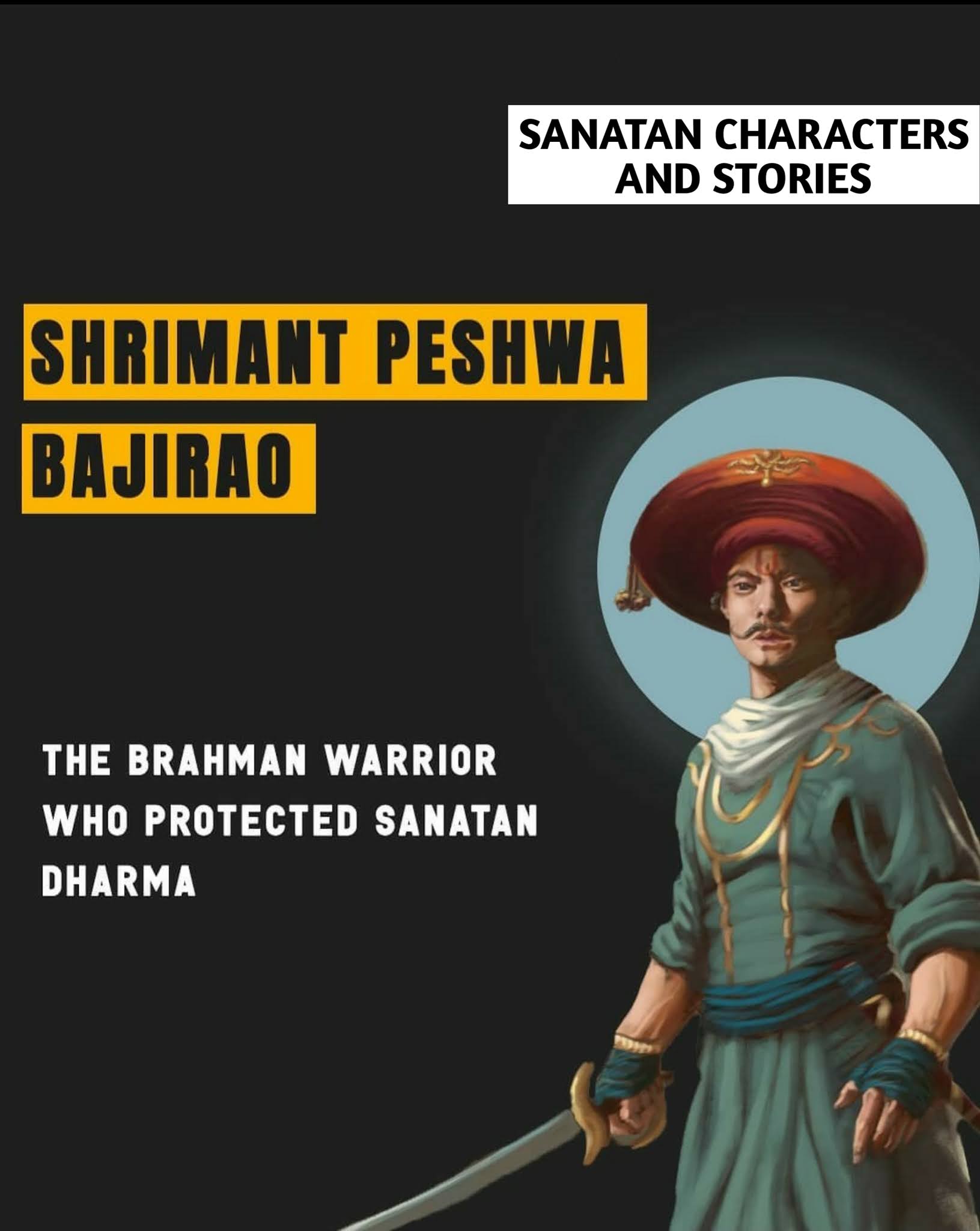THE BRAHMAN WARRIOR WHO PROTECTED SANATAN DHARMA
An adroit swordsman, outstanding rider, ace strategist and leader by birth, Bajirao (1) succeeded his father as Peshwa when he was only twenty-two years of age, launching into an eminent military career that occupies its own special place in the history of Aryavarta.
Not often does one man flog his presence in an entire subcontinent and establish an empire that spreads across colossal Bharat's landmass. His movements, from Delhi to Srirangapatnam and Gujarat to Berar over a twenty-year period of his reign as Peshwa in the 18th century, were inimitable in speed and distance.
It is usually considered, in error, that the Great Napolean Bonaparte never lost a Battle. However, that is not true. Napoleon had his share of loss at the 'Battle of Waterloo'.
However, the fact remains that, the only Warrior-General-Prime Minister, who never ever lost even a single battle, in a groundbreaking career of 20 years was Peshwa Bajirao Ballal Bhat. He was a notable and only warrior in the world, who till his death remained undefeated.
Bajirao was the eldest son of Balaji Vishwanath, first Peshwa of Chattrapati Shahuji.
The bhat family of Bajirao belonged to the Chitpavan Brahmin or the Konkanastha Brahmin community of the Konkan region. At the age of 20, Bajirao was appointed by Shahu as Peshwa (Prime Minister) upon the death of his extraordinary eminent father, keeping aside all other claimants.
Even today the Military Tactics adopted by Bajirao are taught in the Indian Military Schools. His triumph in the Battle of Palkhed is supposed to be a study in itself for the Military Strategists.
His military campaigns were classic examples of his genius. In the disarray of the religious intolerance continued by the tottering Mughals after Aurangzeb, Bajirao stood out as the champion of Hinduism as he protected Hindu Dharma from the onslaught of Islamic rulers.
The Hindu Kingdom made by its founder, Chhatrapati Shivaji Maharaj, and later expanded by Bajirao reached its peak during his son's hegemony twenty years after his death. After driving the Afghans out of Punjab, they raised the saffron flag of Hindus not just on the walls of Attock, but even beyond.
- Brahma Muhurta Time - Best Time to Wake Up in the Morning
- 12 Types of Legal Heir ( Children ) in Ancient India
- Chakravyuh | Padmavyuha The Biggest Secrets
- How to practice Dhyana by Ved, Science and Maths
- Significance of Feeding Crows
- 16 Adornments सोलह श्रृंगार (Solah Shringar)
- Significance of Choice of Morality - Part 1
- Significance of Choice of Morality - Part 2
- 10 Things Hindu Men Must Follow
- What Hindu Women Must Know
- Why do Hindus Wear Bindis and Tilaks on Their Forehead? Science and Significance behind Tilak and Bindi
- Who is a Hindu?
- Classification of Hindu Scriptures
- Dance in Hindu Civilization
- The Story of Adi Shankaracharya
- When A Devotee Offered Meat to Lord Shiva
- The Story of Gajendra Moksha Stotra
- Mysteries about Baba Amarnath Cave Temple
- Secrets of DEVI DURGA
- Draupadi
- Hanuman Janmotsav
- How 100 Kauravas Were Born
- Secrets Of SHRIMANT PESHWA BAJIRAO
- Philosophical and Spiritual Significance Of Ramayana
- DAY 1 of NAVARATRI 2021 :- Maa Shailaputri
- DAY 2 of NAVARATRI 2021 :- Brahmacharini Devi
- DAY 3 of NAVARATRI 2021:- Chandraghanta Devi
- DAY 4 of NAVARATRI :- Kushmanda Devi
- DAY 5 of NAVARATRI :- Skandamata Devi
- DAY 6 of NAVARATRI :- Katyayani Devi
- DAY 7 of NAVRATRI :- Kalaratri Devi
- DAY 8 of NAVRARATRI :- Mahagauri Devi
- DAY 9 of NAVARATRI :- Siddhidhatri Devi
- The Submerged City of DWARKA
Har Har Mahadev 🙏🧡.





